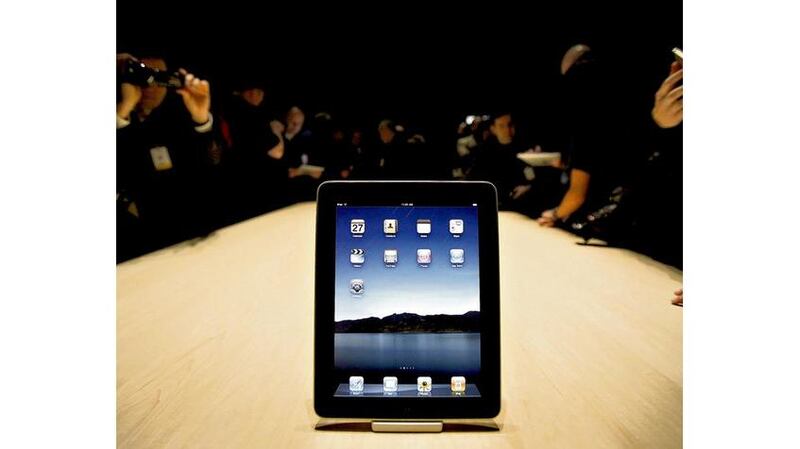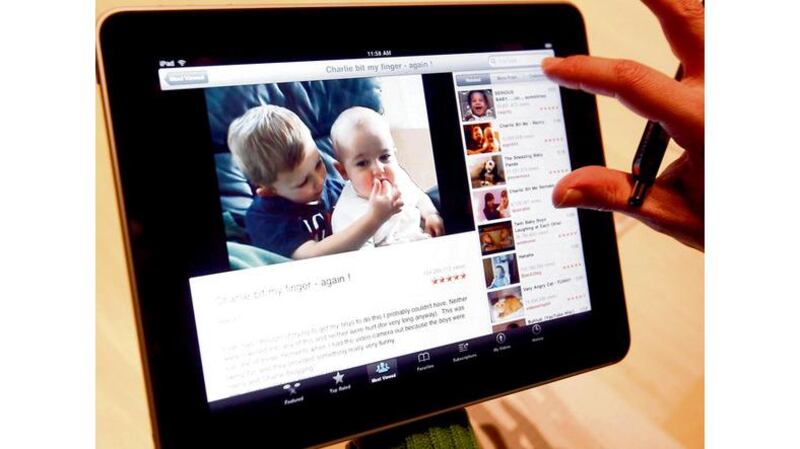The iPad could never have lived up to the overhyped expectations. But opinion is divided on whether it is a game changer, a big yawn or something in between, writes KARLIN LILLINGTONand JOHN COLLINS
AS THE most anticipated product since the launch of, well, the iPhone, Apple’s iPad was never going to live up to the overinflated expectations.
Apple’s master of the product launch, chief executive Steve Jobs, was no doubt keenly aware of this with Wednesday’s tightly scripted, invite-only launch in San Francisco.


Jobs began with a bit of subtle positioning of Apple and where the tablet fits in. Looking purely at sales, Apple is now “the largest mobile device company in the world”, according to Jobs, thanks to its sales of laptops, portable media players and smartphones – earning more revenues from these categories than Sony, Samsung and even mobile-handset giant Nokia.
“All of us use laptops and smartphones,” said Jobs. “The question has arisen: is their room for a third category of device in the middle? We pondered this question for years. In order to create a new category of devices, those devices are going to have to be far better at doing some key tasks.”
Even though the iPad is entering what is effectively a new category – this is completely different from the touchscreen laptops Bill Gates and Microsoft began pushing in 2001 – it follows an Apple legacy of entering a market and doing far better than the competition.
The iPad could not have fulfilled all of the overhyped expectations that seemed to dominate the web in the post-Christmas period. Instead, Apple concentrated on delivering a device that would do key tasks – web browsing, displaying books, reading e-mail, listening to music, watching videos – extremely well. Is it any wonder the online commentators felt the unveiling was a little flat?
So is the iPad a game changer, a big yawn or something in between?
That seems to depend on who you’re asking. Predictably, once the geeks got hold of the specifications they were looking for what wasn’t there as much as trying to find out more about what was.
Topping the list of dislikes are the lack of a webcam, the inability to run multiple applications at the same time, the inability to play Adobe Flash files, and the need for an adapter to plug in USB devices.
The geek negatives, however, are often things the general market isn’t much bothered by. For example, the fact that you can’t run multiple applications perhaps misses the point: it is not designed to be a standalone computer, otherwise it would have made more sense to go with the Mac operating system rather than a glorified iPhone operating system.
Most people do not run many applications at the same time. Or, to be more precise, they may have more than one open, but they will be using just one application at a time.
The decision not to include Flash support may seem more curious at first: Adobe’s format is widely used to display video and to embed interactive content, including advertisements on webpages. But Flash is processor-intensive, which means it hogs battery power. Apple also doesn’t like the fact that it is a closed format controlled by Adobe. With YouTube and Vimeo moving away from Flash, don’t expect Apple to add support any time soon.
Similar complaints on a different scale were made about the iPhone, which initially did not have a webcam, still sports a so-so camera, and cannot multitask. None of that has stopped sales of the iPhone.
Others were disappointed that lots of media deals were not announced at the launch, as rumours had swirled about these for weeks. But the device won’t even be on sale for another two months in the US, and Apple may wish to play its cards closely.
Some of the criticisms seem to miss the point of the device – assuming that the point is to make the iPad an almost transparent conveyor of services, functions and activities, many of which people already enjoy doing.
Even if its only purpose was to act as a gigantic screen for your iPhone or iPod Touch activities, a market would probably be there already. But going by the evidence, the iPad seems to have qualities likely to appeal to many types of user and, like the iPhone market, these users will not be limited to the aficionados of high-end electronics.
That certainly seems to have been the reaction of most financial analysts, with JP Morgan, Canaccord Adams and RBC Capital Markets among those liking what they saw.
Carolina Milanesi, research director for mobile devices at analyst Gartner, was at the launch and had a chance to try out the iPad. While she notes that the device is somewhat different to the hype-led predictions, she says “the reality is better than what you could see on paper or video”.
Key points about the device for Milanesi are the fact that it will connect immediately to Apple’s App Store – so people can start to use it right away – and the fact that spreadsheet, word processing and slide applications will be available.
“You can use this device for productivity, and it’s not just the Macintosh version of these applications, but fully integrates touch.”
Also, she adds, “the pricing just blew everyone away”.
Milanesi says the advantage for Apple is that it does not need to go out and find a market. “It is a device that can be what you want it to be,” she says. “It’s definitely not a geek device – it is a device for everyone.”










